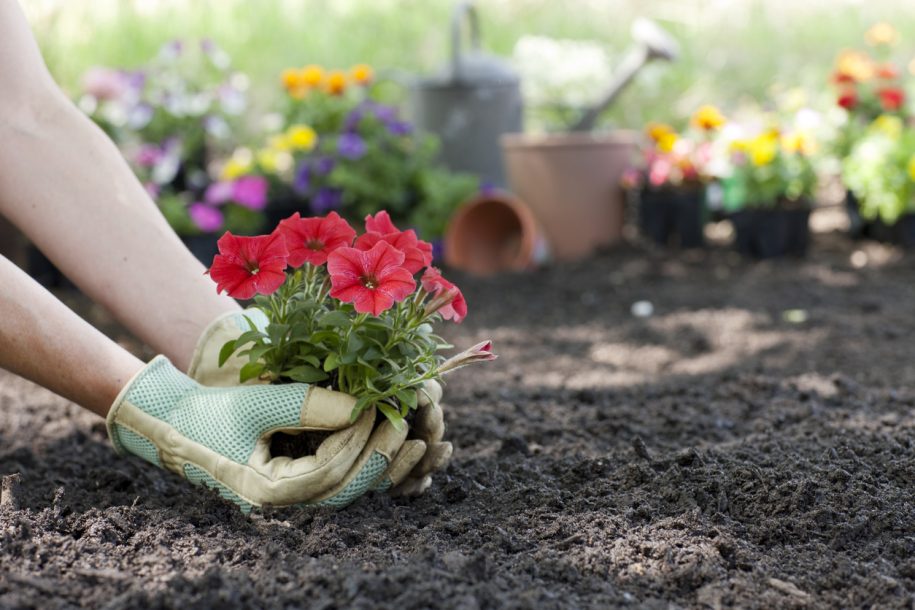Gardening Soil Guide for Beginners
Gardening is a rewarding hobby that not only beautifies your surroundings but also provides a sense of accomplishment. However, starting a garden can be daunting, especially when it comes to choosing the right soil. This guide will simplify the process by explaining the different types of soil, how to choose the right one for your plants, and tips for improving your garden soil. Whether you’re growing flowers, vegetables, or houseplants, understanding soil basics is key to a thriving garden.
Understanding Garden Soil
Garden soil is more than just dirt. It’s a complex mixture of minerals, organic matter, air, and water. Good soil provides essential nutrients, supports plant roots, and retains moisture. Here are the main components of garden soil:
Mineral Particles
Soil is made up of different sizes of mineral particles: sand, silt, and clay. The proportions of these particles determine the soil’s texture.
- Sand: Coarse and gritty, sand particles allow for good drainage but don’t hold nutrients well.
- Silt: Fine and smooth, silt retains moisture and nutrients better than sand.
- Clay: Very fine particles, clay holds nutrients well but can become compacted, limiting drainage and root growth.
Organic Matter
Organic matter consists of decomposed plant and animal material. It improves soil structure, provides nutrients, and increases water retention. Compost, leaf mold, and manure are common sources of organic matter.
Air and Water
Soil needs space for air and water. Air is essential for root health, while water is necessary for nutrient uptake. A balance is vital, as too much water can suffocate roots, and too little can lead to dehydration.
Types of Garden Soil
Understanding the different types of soil will help you choose the best one for your gardening needs. Here are the main types:
Loam
Loam is considered the ideal garden soil. It contains a balanced mix of sand, silt, and clay, along with plenty of organic matter. Loam is fertile, well-draining, and easy to work with, making it suitable for most plants.
Sandy Soil
Sandy soil has large particles and drains quickly. While it’s easy to work with, it doesn’t retain nutrients well. To improve sandy soil, add organic matter like compost or well-rotted manure.
Clay Soil
Clay soil has fine particles and retains moisture and nutrients well. However, it can become waterlogged and compacted, making it difficult for roots to penetrate. To improve clay soil, incorporate organic matter and consider raised beds for better drainage.
Silty Soil
Silty soil is smooth and retains moisture and nutrients better than sandy soil. It can be prone to compaction, so adding organic matter can help improve its structure.
Peaty Soil
Peaty soil is rich in organic matter and retains moisture well. It’s acidic, which is suitable for acid-loving plants like rhododendrons and blueberries. Lime can be added to reduce acidity if necessary.
Chalky Soil
Chalky soil is alkaline and can be rocky. It drains well but may require additional nutrients. Adding organic matter and using fertilizers can help improve its fertility.
Potting Mix for Container Gardening
If you’re growing plants in containers, you’ll need a potting mix rather than garden soil. Potting mix is specially formulated to provide the right balance of nutrients, drainage, and aeration for container plants. Here’s what to look for in a potting mix:
Ingredients
- Peat Moss or Coconut Coir: These materials retain moisture and provide a lightweight structure.
- Perlite or Vermiculite: These minerals improve drainage and aeration.
- Compost or Fertilizer: Provides nutrients for plant growth.
Benefits of Potting Mix
Using potting mix in containers ensures good drainage, prevents soil compaction, and provides essential nutrients. Avoid using garden soil in containers, as it can become compacted and may not drain well.
Improving Your Garden Soil
To create a healthy environment for your plants, it’s essential to improve your garden soil. Here are some tips:
Test Your Soil
Before making any changes, test your soil to determine its pH and nutrient levels. Soil test kits are available at garden centers and online. Knowing your soil’s characteristics will help you make informed decisions about amendments.
Add Organic Matter
Incorporating organic matter is one of the best ways to improve soil quality. Compost, well-rotted manure, and leaf mold enhance soil structure, increase nutrient content, and improve water retention.
Adjust Soil pH
Soil pH affects nutrient availability. Most plants prefer a slightly acidic to neutral pH (6.0 to 7.0). If your soil is too acidic, add lime to raise the pH. If it’s too alkaline, sulfur or peat moss can lower the pH.
Improve Drainage
For soils that retain too much water, improve drainage by adding sand or gravel. Raised beds are another option for better drainage.
Rotate Crops
Crop rotation helps prevent nutrient depletion and reduces the risk of soil-borne diseases. Change the location of plant families each season to maintain soil health.
Conclusion
Understanding the basics of garden soil is crucial for successful gardening. By knowing the types of soil, using the right potting mix for containers, and improving your garden soil, you can create an ideal environment for your plants to thrive. With a little effort and knowledge, you’ll enjoy a bountiful and beautiful garden.


Leave a Reply
You must be logged in to post a comment.